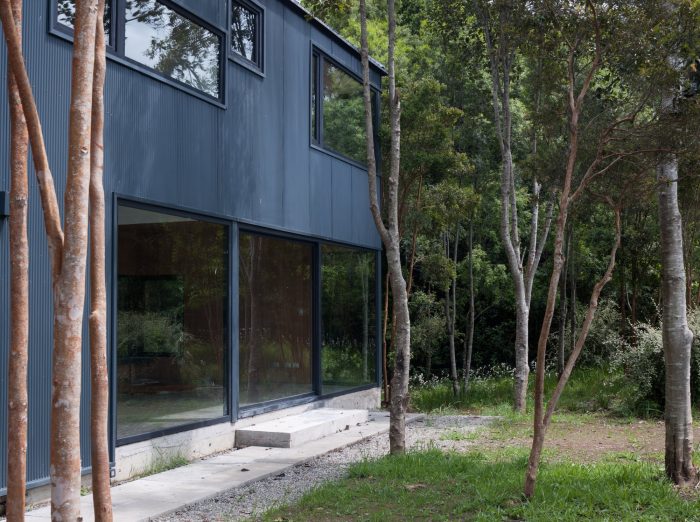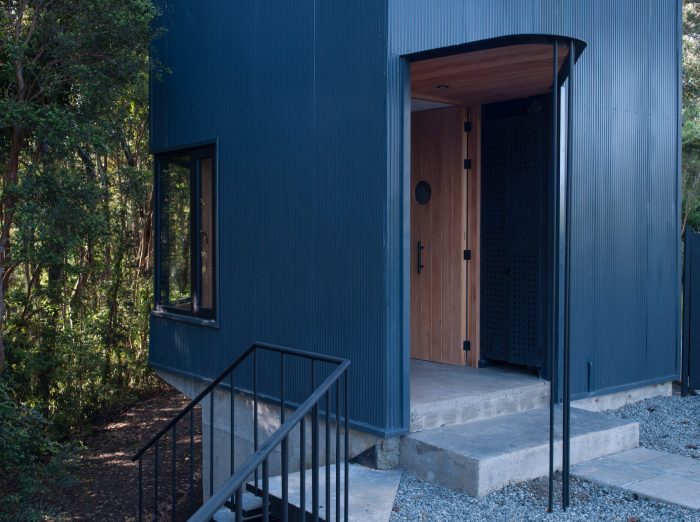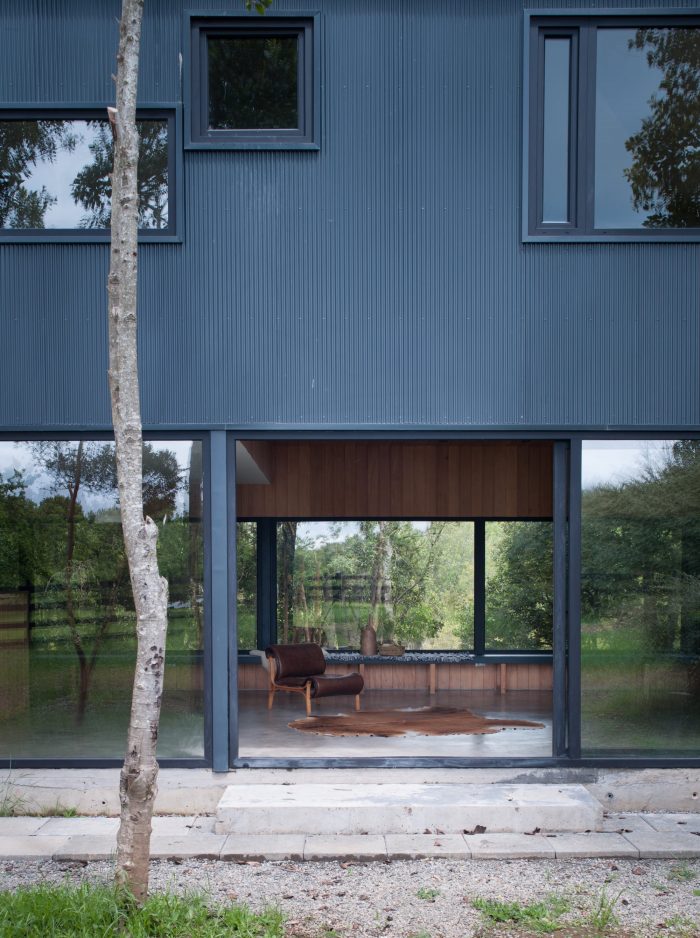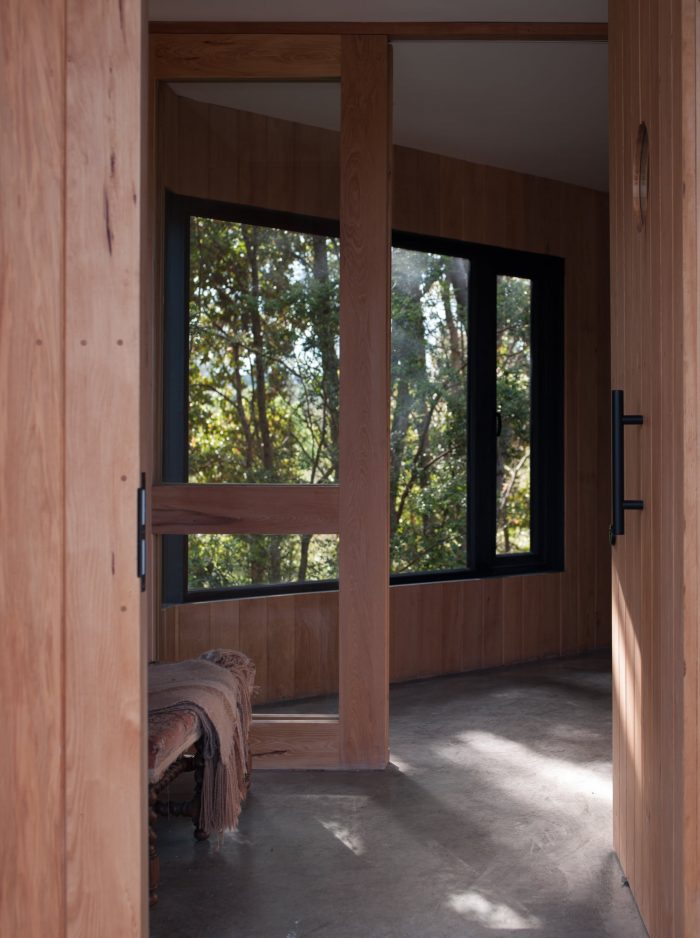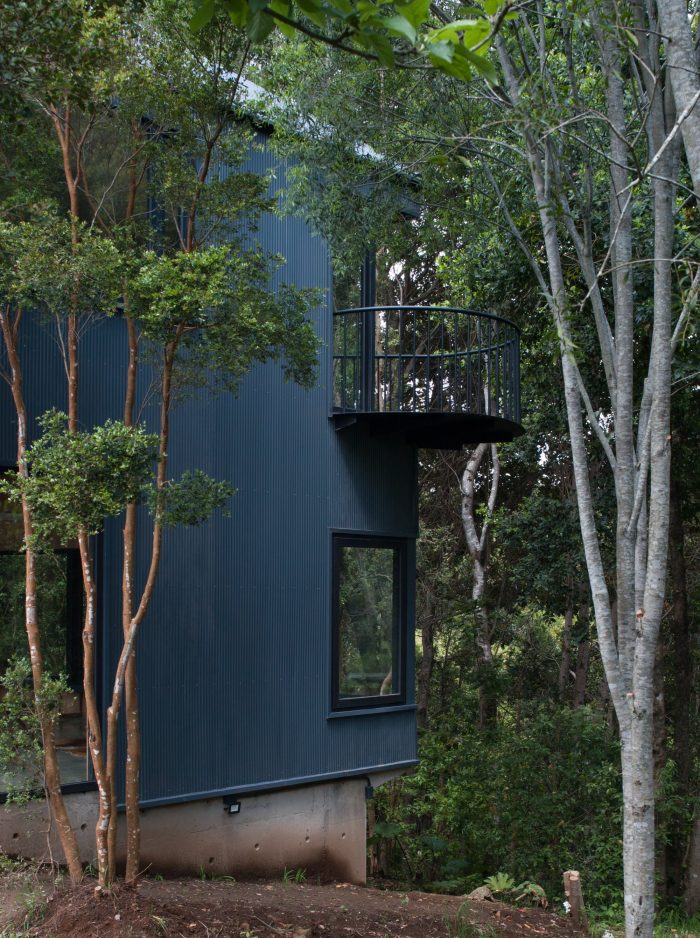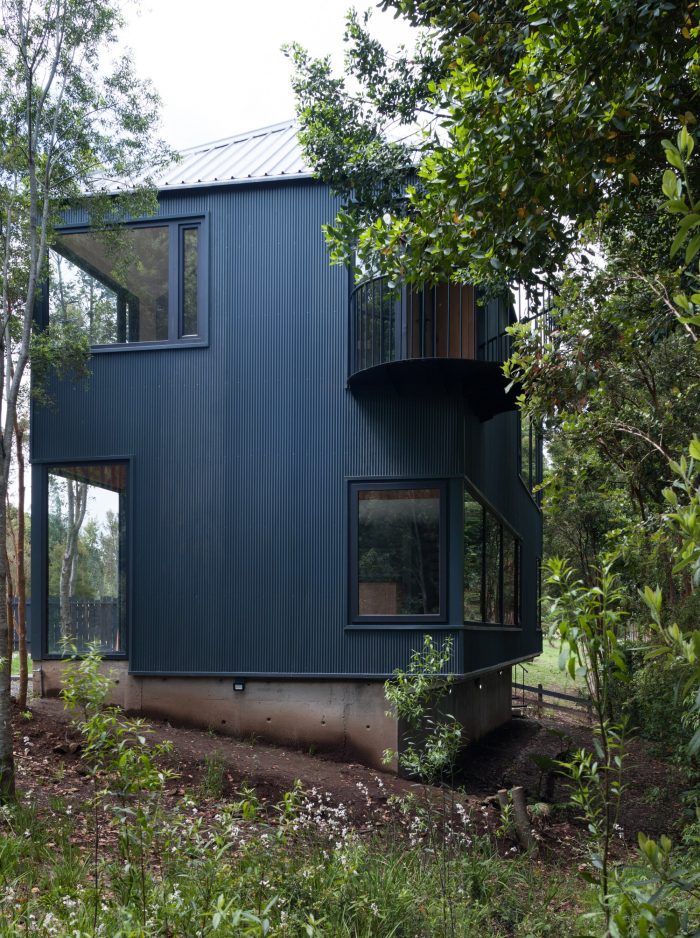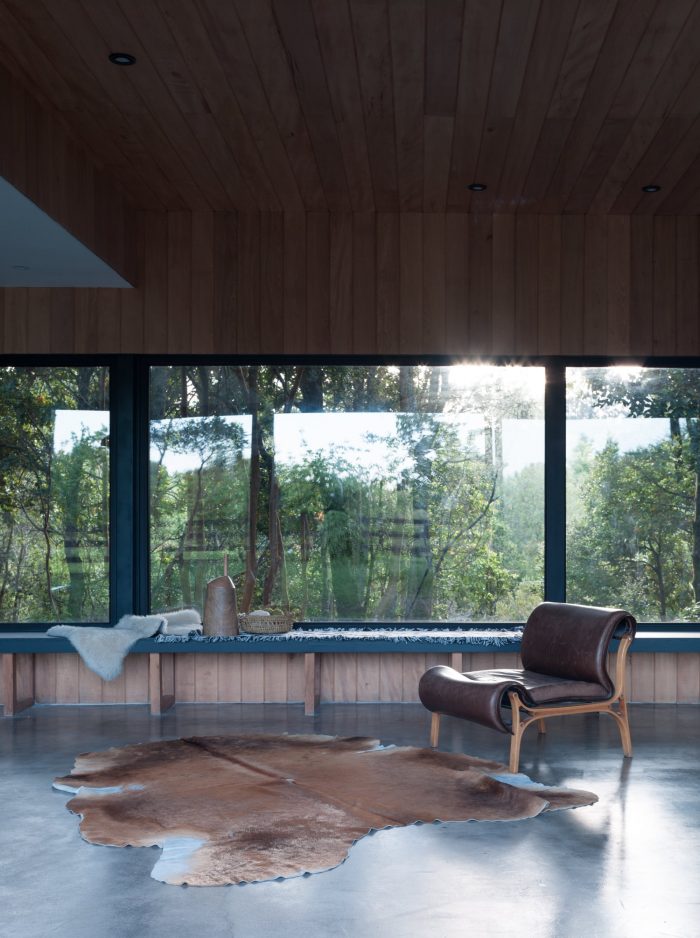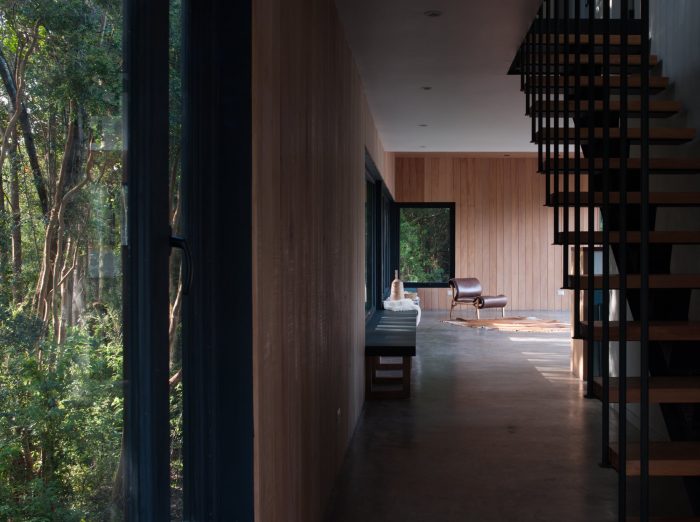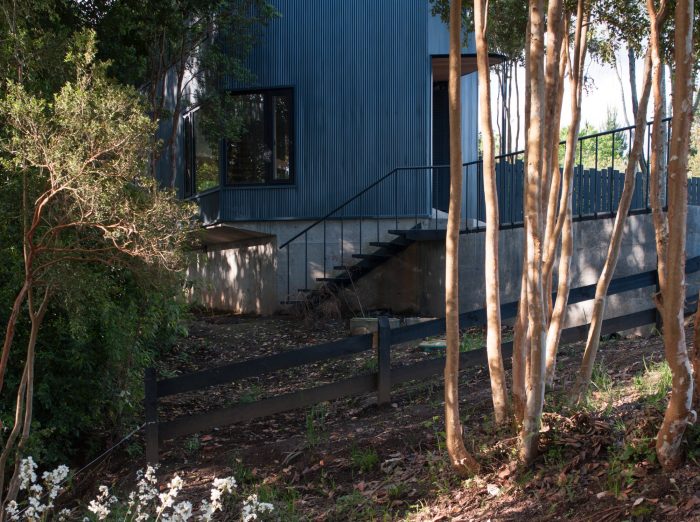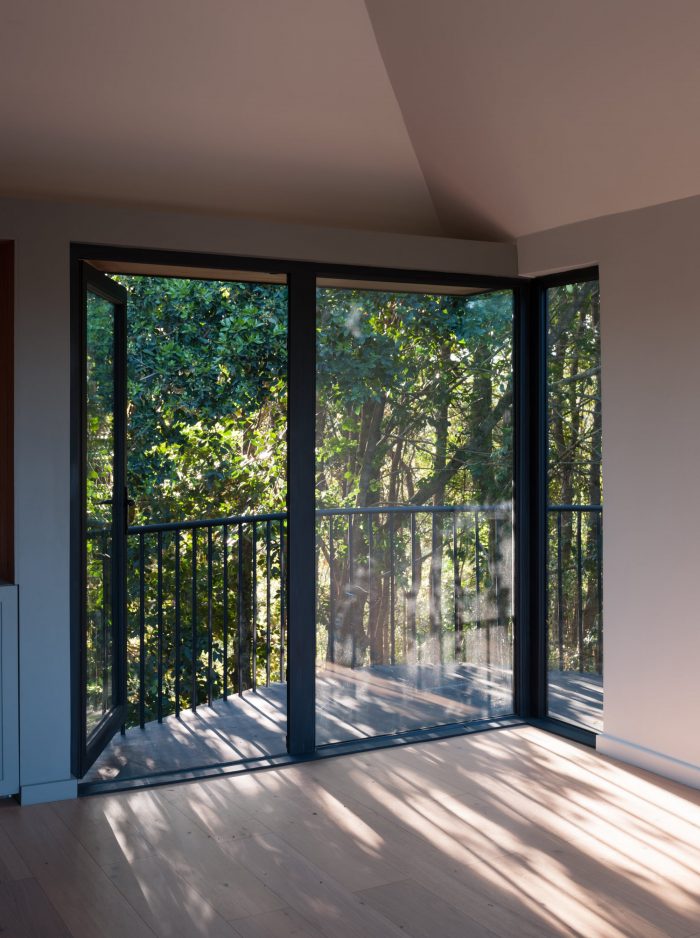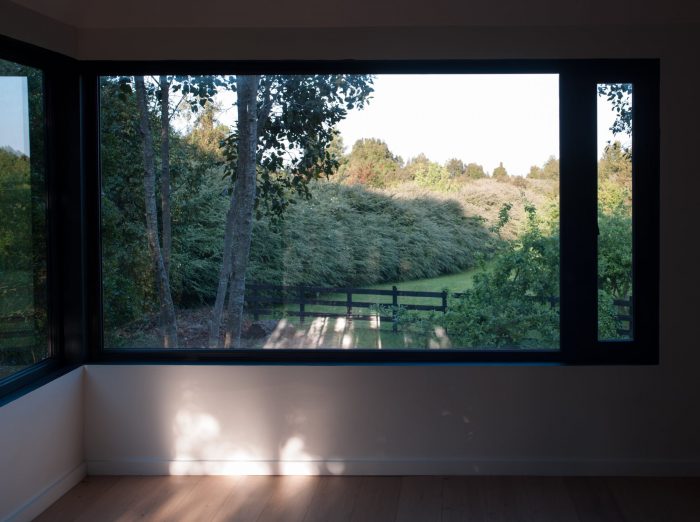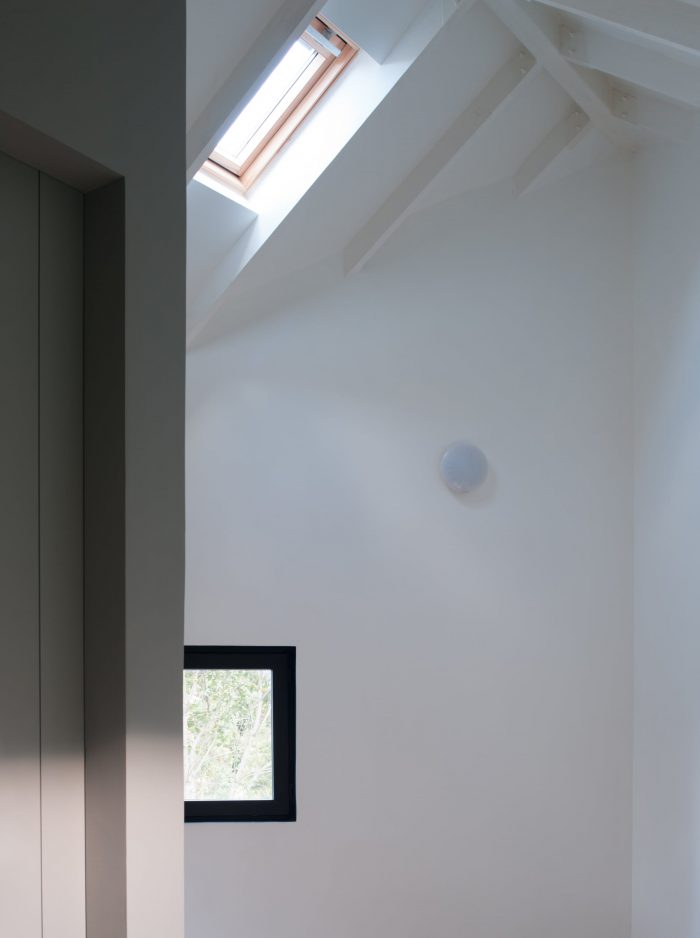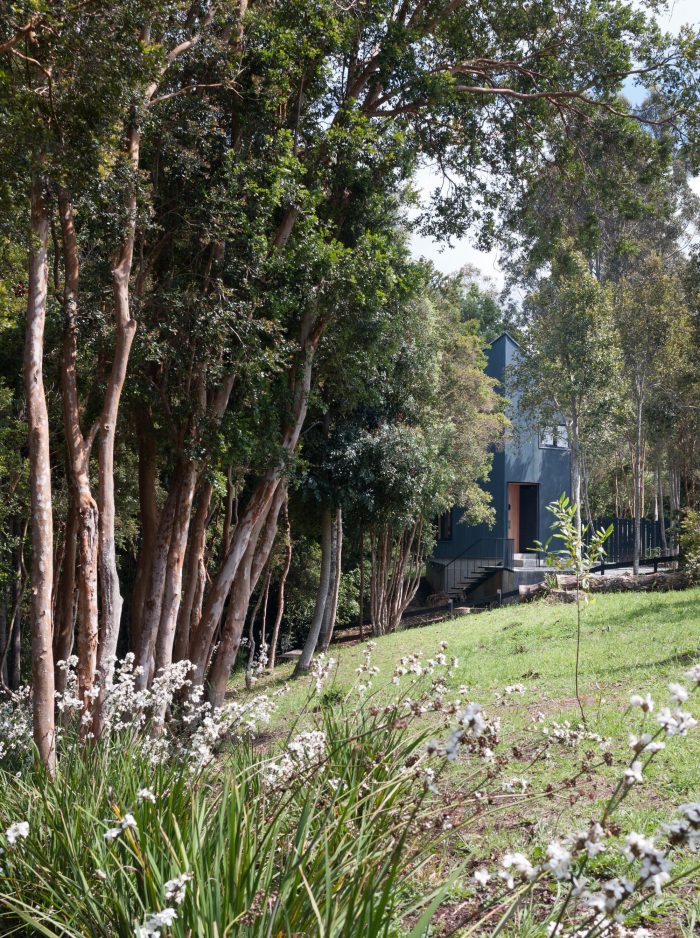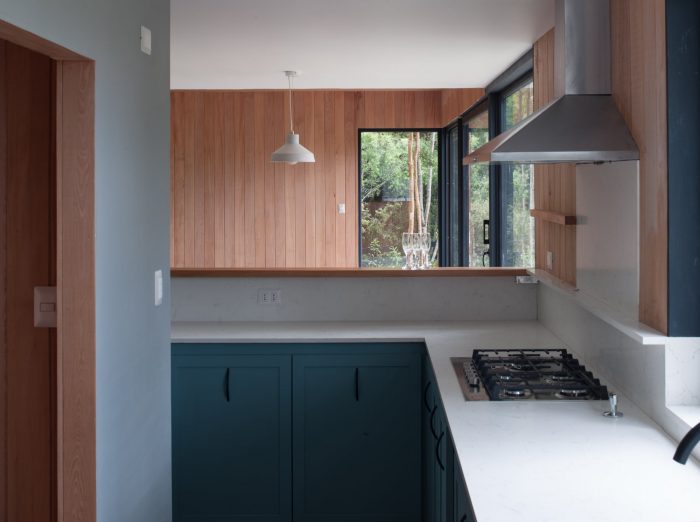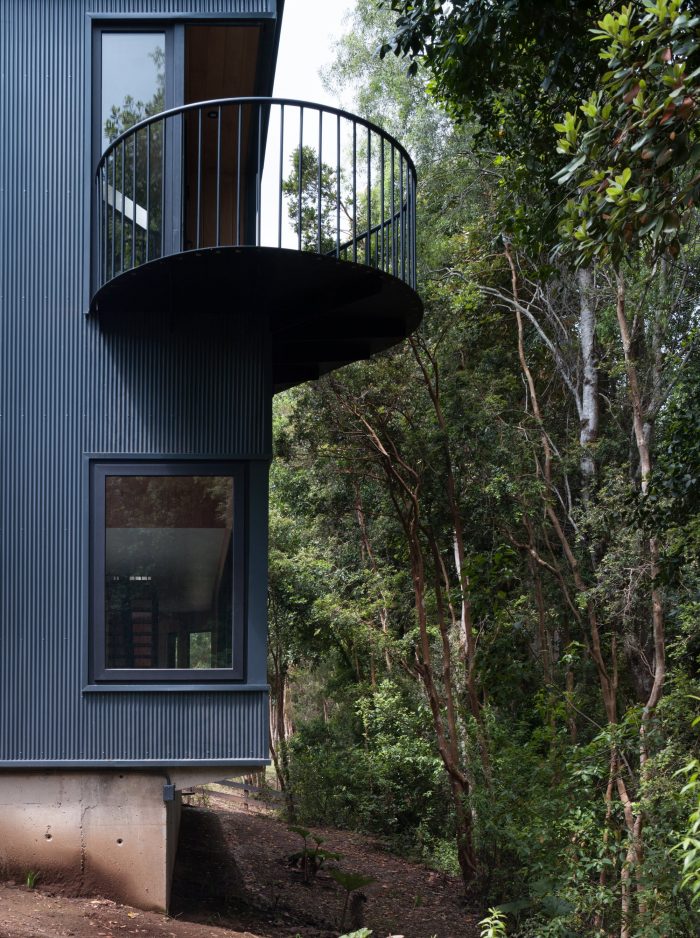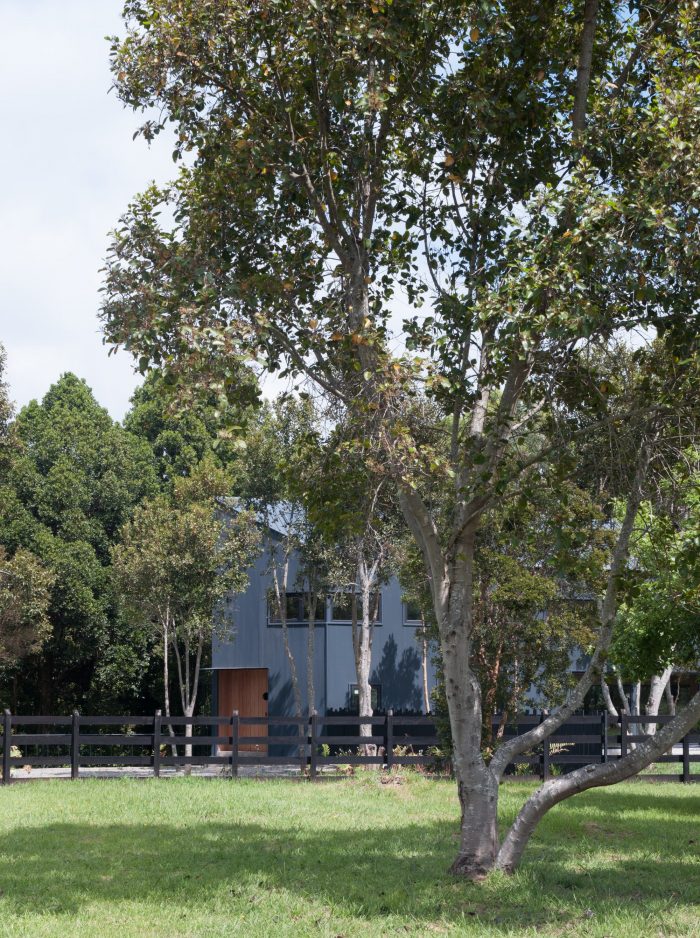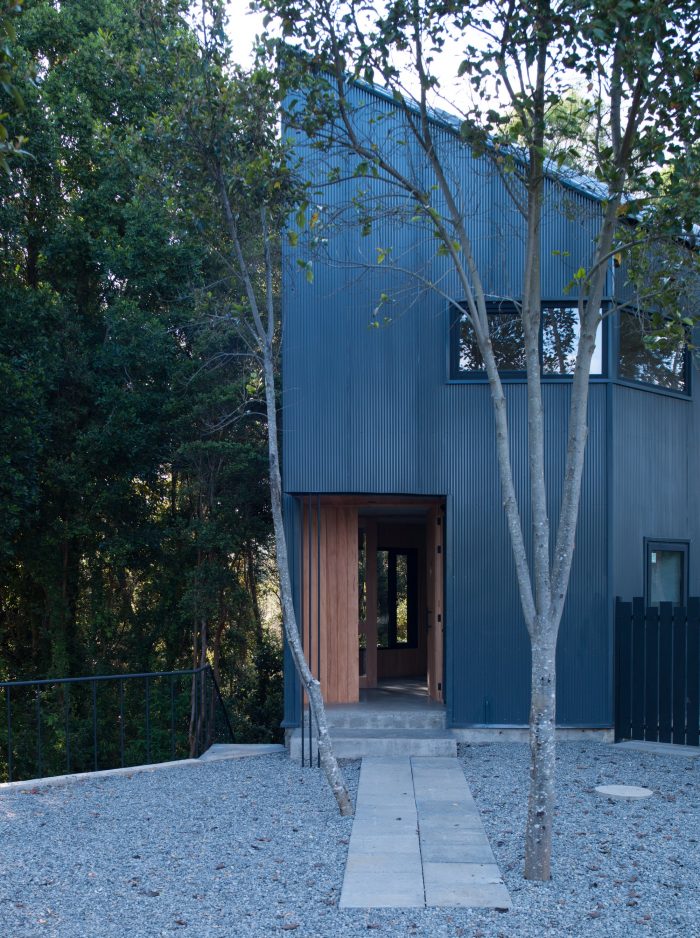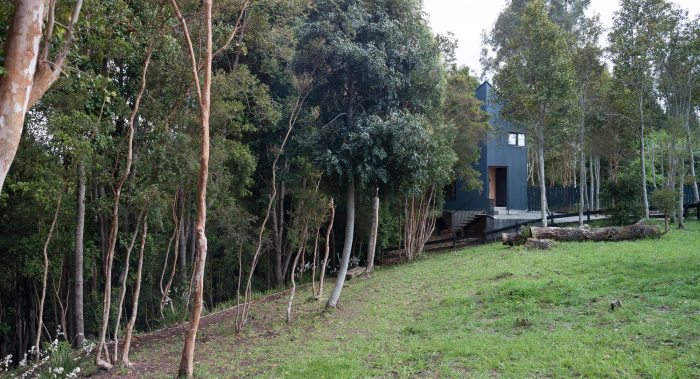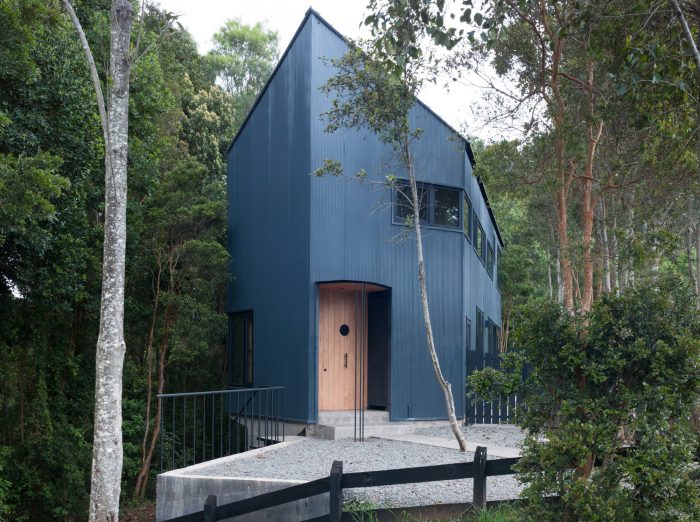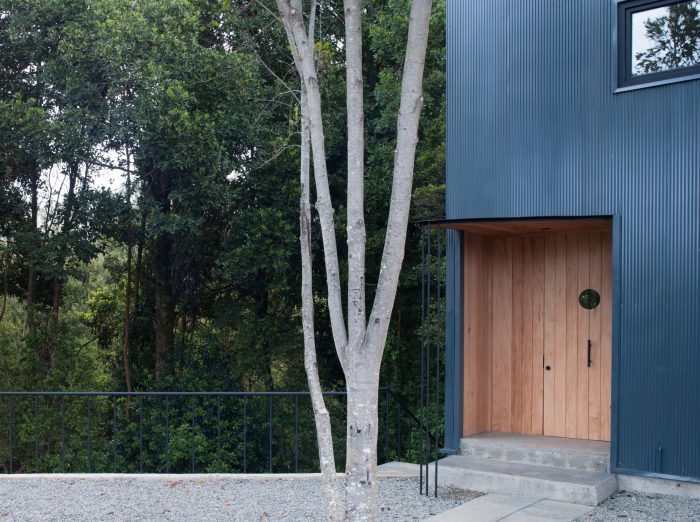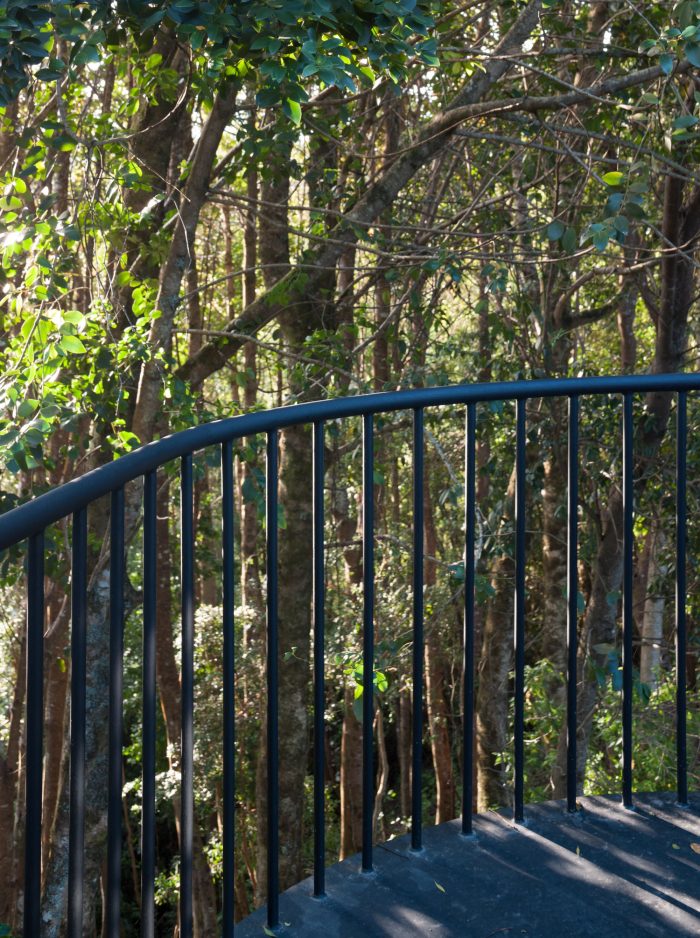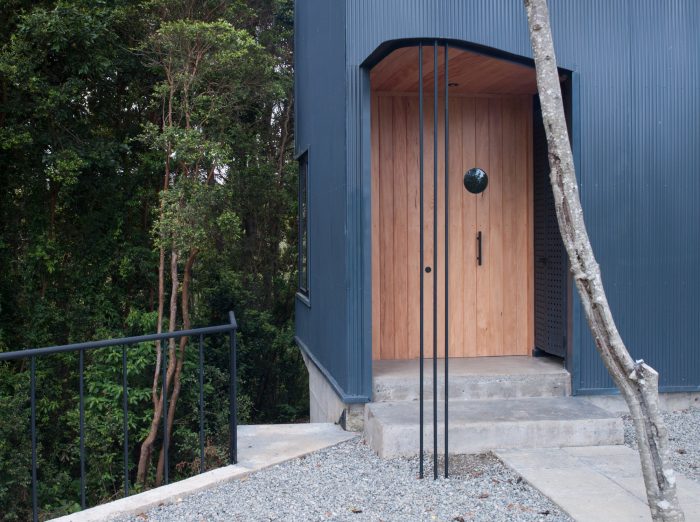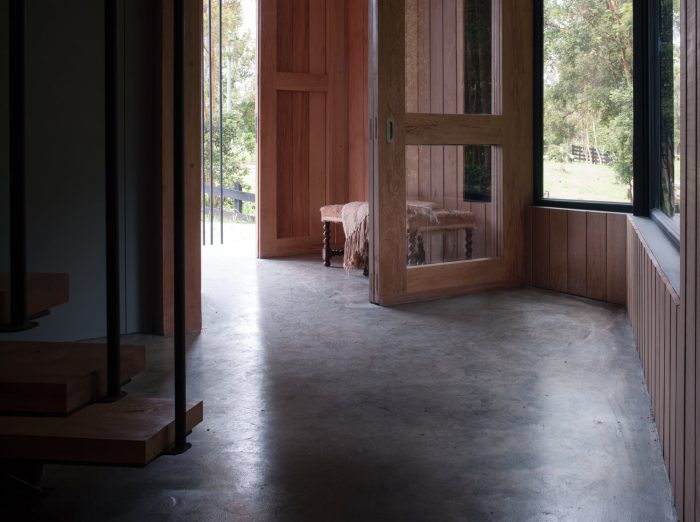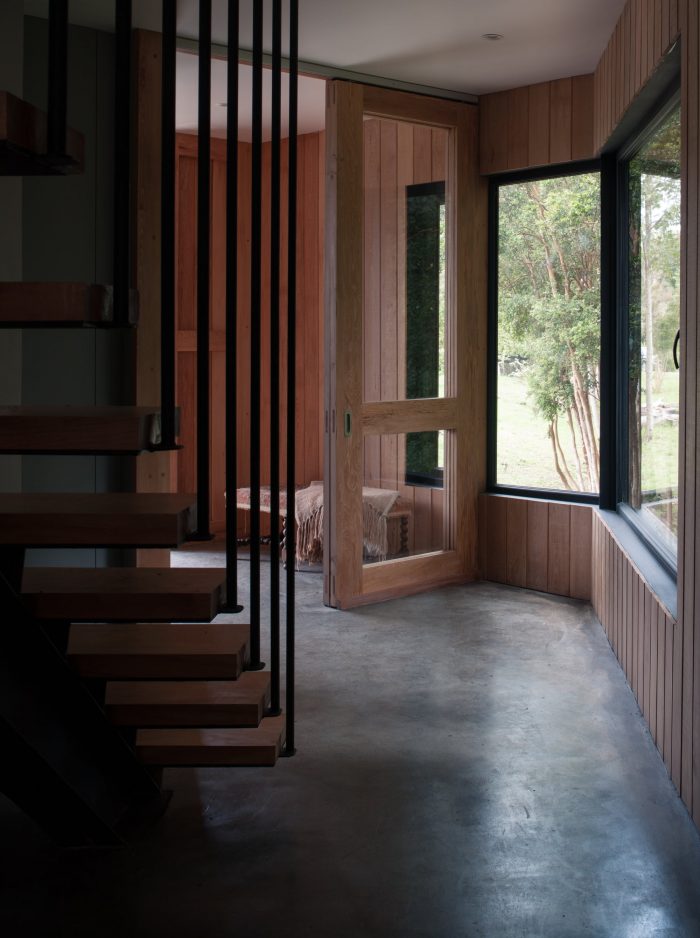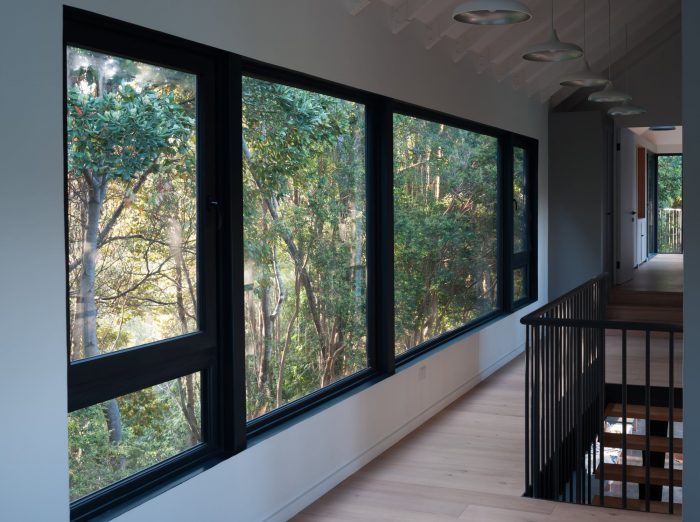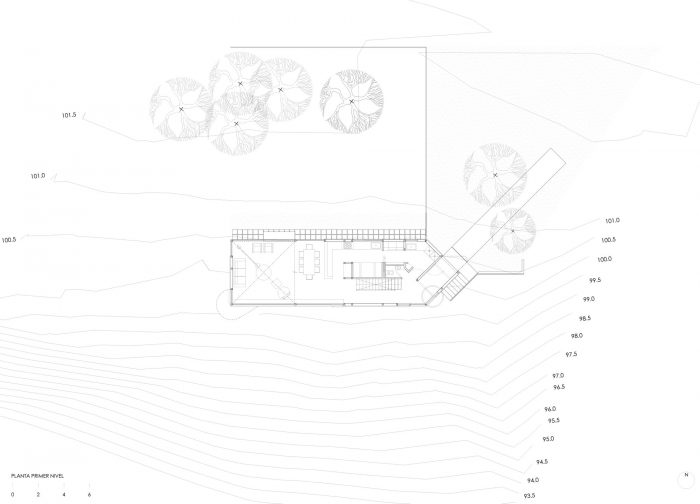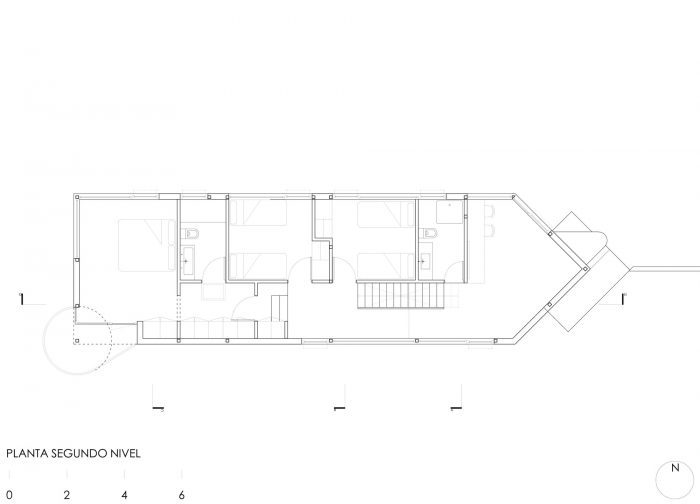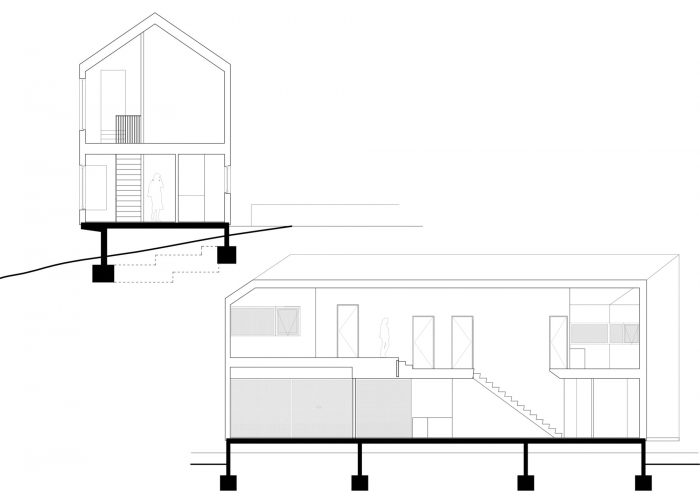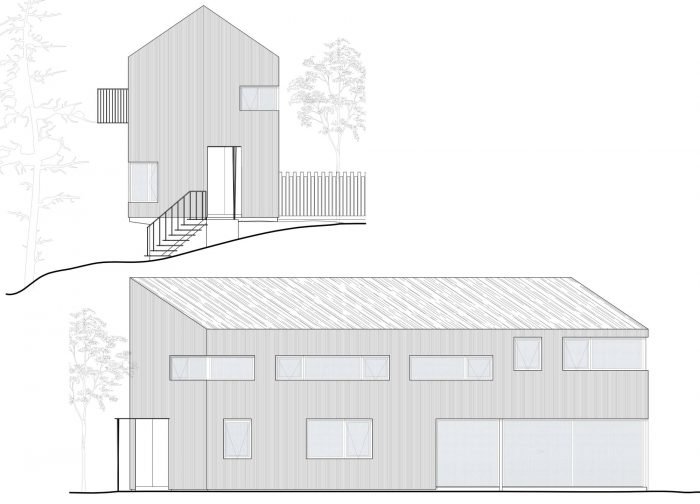Komorebi之家是一个为出租而设计的单户住宅,这种类型的住宅在该地区已经很普遍,它的挑战是为一个匿名但可识别的用户设计,大多数是从智利中部到南部的年轻家庭。该办公室被委托完成全部任务;从寻找场地、确定潜在用户,到建筑建议,再到施工概况,使我们有机会以整体的方式面对它。
House Komorebi Is a single-family dwelling designed for rent, a typology that has become common in the area and that carries the challenge to design for an anonymous but identifiable user, mostly young families moving from central to southern Chile. The office was commissioned with the full extent of the assignment; from finding the site, identifying potential users, to the architectural proposal and following to the construction overview, giving us the opportunity to face it as a holistic approach.
在这个地方,最初是一个被忽视的地块,靠近Frutillar的郊区发展,有原始的本地植被和一个相当不舒服的倾向,我们看到了一个隐藏的潜力,可以用来支持这个项目。我们把这两个变量–坡度和密集的木材–作为挑战来解决。
In the site, initially an overlooked plot from a suburban development close to Frutillar with pristine native vegetation and a rather uncomfortable inclination, we saw a hidden potential to be used in favour of the project. We took these two variables -inclination and dense wood- as the challenges to solve.
第一个对策是建造一个与倾斜度平行的混凝土基座,其高度足以使底层水平与场地的小平面部分相匹配,当添加到内部时,水平感加倍。在顶部,一个两层的单节钢结构被移向峡谷,使体积部分依附在上面,放大了延伸效果。
The first response was building a concrete base parallel to the inclination, high enough to match the ground floor level with the -rather small- flat fraction of the site, doubling the sense of horizontality when added to the interior. On top, a two-story steel structure of single section is displaced towards the gorge, leaving the volume partly clinging and amplifying the extension effect.
无法翻译的日语单词Komorebi体现了当光线穿过树木时产生的感觉和氛围,这是在房子里每天都有的体验。
The untranslatable Japanese word Komorebi embodies the feeling and atmosphere created when the light shines through trees, an experience lived in the house on a daily basis.
阳光大道用来自开放花园的清晰晨光沐浴着房子的长面(东面和西面),而傍晚的光线则成为室内的主要体验,因为当太阳从树上下来时,它描绘了无限的颜色和色调。在这两层楼里,走廊被特意安排在西面,是通过树叶沉思光线的过道。房间则相反地寻求更稳定的晨光和遥远的火山景观。
The sun path bathes the long facades of the house (east and west) with clear morning light from the open garden whereas the evening light becomes a major experience inside as it portrays and infinite array of colours and hues as the sun comes down through the trees. in both floors the corridors are purposefully located to the west, aisles of contemplation of the light through leaves. The rooms seek oppositely the more stable morning light and distant volcano views.
Architects: DRAA
Area : 168 m²
Year : 2019
Photographs :Felipe Camus
Design Team : Nicolas del Rio, Felipe Camus
Engineering : Roberto Soto, Vertical Ingenieros
Collaborators : Germán del Rio, Linda Lanzavecchia, Nehemías Fuentes
Constructor : Luis Márquez
City : Frutillar
Country : Chile



